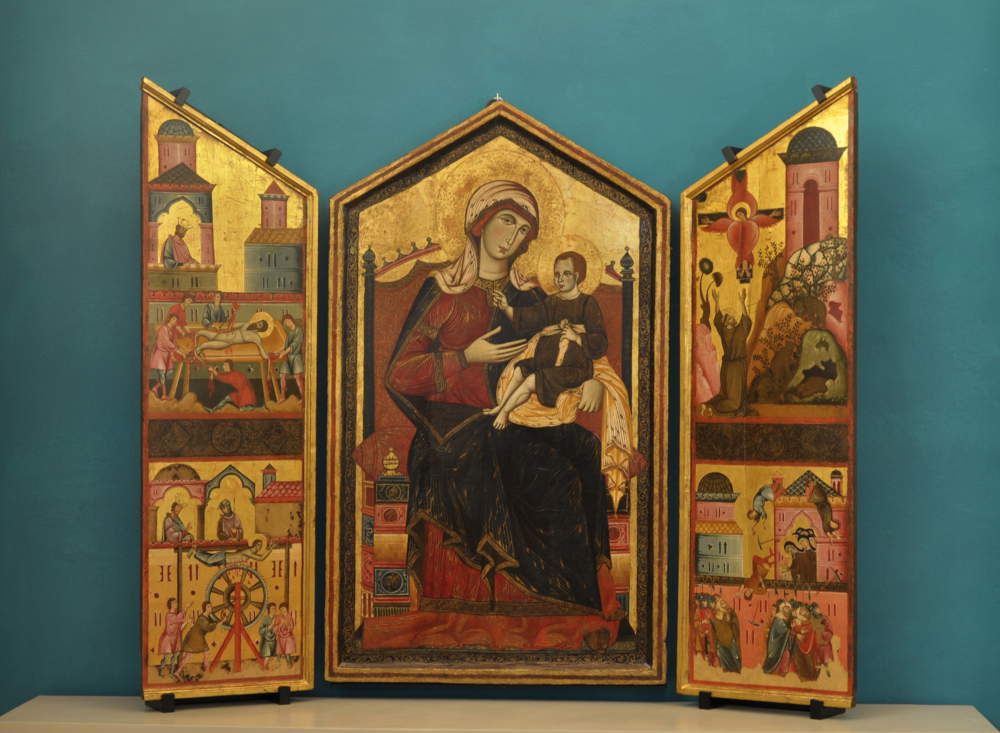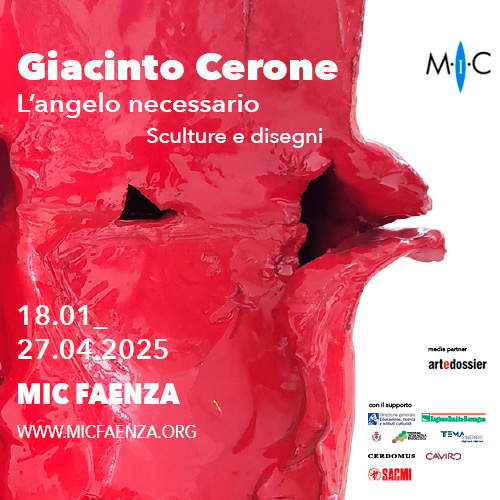Siena's Pinacoteca Nazionale, reassembled Triptych of St. Clare thanks to Florence's Galleria dell'Accademia
From December 5, 2023, it will be possible to admire the Triptych of St. Clare reassembled in the thirteenth-century hall of the Pinacoteca Nazionale di Siena. After many years, in fact, the project to recompose the masterpiece finds its realization, thanks to the collaboration between the directions of the Galleria dell’Accademia in Florence and the Pinacoteca Nazionale in Siena.
The recomposition process started from an intuition of art historian Miklos Boskovits, who had the idea of juxtaposing the Madonna and Child in Florence with the two doors with stories of saints in the Pinacoteca Nazionale in Siena. The first proposals for a recomposition and relationship between the two museums occurred about two decades ago, and already in the past the two museums had worked actively to display the two works in the same location.
The central part, kept at the Galleria dell’Accademia in Florence and depicting the Madonna Enthroned, was transported to Siena where it will be kept in long-term storage and flanked by the two side parts with stories of saints already on display in Room 2 of the Pinacoteca, where there are other works by painters of the 13th century in Siena. The Madonna and Child, attributed to Guido da Siena, is depicted in accordance with the Byzantine iconography of odigitria, with the Virgin pointing to her son, seated on a sumptuously structured throne, while in the side panels, referred to Dietisalvi di Speme, scenes relating to St. Francis and St. Clare are paralleled with the martyrdoms of St. Bartholomew and St. Catherine of Alexandria. The painting probably comes from the monastery of Santa Petronilla, the Sienese seat of the Poor Clares, as suggested by the presence of the two Franciscans.
The joint points of the central part exactly match those of the side doors, an element that proved to be very important in attributing the parts to the same work, since medieval paintings were different from each other and dimensions usually varied. It would therefore have been a strange coincidence to find such a combination between two different works. The apparent difference in composition between the central part with the Madonna and Child and the small, narrative side scenes finds other examples in the works in the room, where paintings by Guido da Siena and Dietisalvi di Speme are displayed. These are two of the leading artists of 13th-century Siena, authors of important works such as Guido’s Madonna di San Domenico or the Madonna of the Vow attributed to Dietisalvi. There must have been close collaboration between the two workshops, as shown by other works in which the hands of the two painters have been identified, such as the diptych of Blessed Gallerani displayed in the same room as the Triptych. The parts of the work have also had different conservation vicissitudes and therefore do not show a perfect homogeneity of color and of the pictorial surface.
The proposal for this reunion is still much debated today, and the two museums hope that this exhibition will prove convincing and support further study and reflection. The operation is also intended to be an opportunity to contribute to the reappraisal of Guido da Siena.
“I thank Cecilie Hollberg for this generous deposit that makes it possible to realize a project kept in the drawer for years. This is a virtuous collaboration of two state museums with special autonomy, which has made it possible to bring to life a new masterpiece of the 13th century in Siena,” said Axel Hémery, director of the Pinacoteca Nazionale di Siena.
“This is an important collaboration between institutions that brings together three panels that now form an extraordinary work,” said Cecilie Hollberg, director of the Galleria dell’Accademia in Florence. “The central part depicting the Madonna Enthroned has been in my office for a long time and of course I miss it a little bit, but of course for reasons of research and conservation it is significant that it is back in its original location.”
 |
| Siena's Pinacoteca Nazionale, reassembled Triptych of St. Clare thanks to Florence's Galleria dell'Accademia |
Warning: the translation into English of the original Italian article was created using automatic tools. We undertake to review all articles, but we do not guarantee the total absence of inaccuracies in the translation due to the program. You can find the original by clicking on the ITA button. If you find any mistake,please contact us.





























